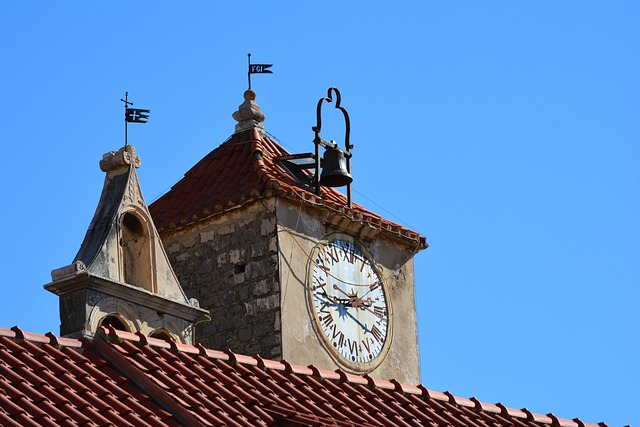Flat roof coatings are strategic investments for homeowners, offering extended roof lifespans by protecting against weather, UV rays, and chemicals. With various types like acrylic and silicone available, choices depend on roof age, material, climate, and desired outcomes. Proper preparation, including cleaning, patching, and ensuring ventilation/drainage, is crucial for successful applications. Application involves cleaning, primer coats, even strokes, adherence to drying times, and proper ventilation. Regular inspections and reapplication every few years enhance coating lifespans and protect against leaks, water damage, and structural issues in flat roof repairs.
“Discover the secret to enduring, leak-free flat roofs with long-lasting coatings. This comprehensive guide explores the transformative power of advanced flat roof coatings in the realm of roofing repairs. From understanding the benefits and diverse types available to mastering application techniques, we’ll navigate the process step-by-step. Learn how proper preparation, expert application, and ongoing maintenance ensure your coating stands the test of time, offering an effective solution for extended protection against elements and potential flat roof repair needs.”
- Understanding Flat Roof Coatings: Benefits and Types
- Preparation for Application: Ensuring a Solid Foundation
- Application Process: Techniques and Best Practices
- Maintenance and Longevity: Prolonging the Life of Your Coating
Understanding Flat Roof Coatings: Benefits and Types
Flat roof coatings are an essential consideration for any property owner with a flat roof, as they offer numerous benefits beyond standard flat roof repair. These coatings serve as a protective layer, shielding the underlying membrane from harsh weather conditions, UV rays, and chemical damage. By extending the lifespan of the roofing material, coatings can significantly reduce the need for frequent repairs and replacements, making them a cost-effective solution in the long run.
There are various types of flat roof coatings available on the market, each with unique characteristics. Acrylic coatings, for example, are known for their durability, flexibility, and ability to reflect sunlight, thus reducing cooling costs. Silicone coatings, on the other hand, offer exceptional water-repellency and resistance to extreme temperatures, making them ideal for regions with harsh climates. Choosing the right coating depends on factors such as roof age, material, climate, and desired benefits, ensuring a robust and sustainable solution for flat roof repair and maintenance.
Preparation for Application: Ensuring a Solid Foundation
Before applying any coating, proper preparation is key for a long-lasting flat roof repair. This involves thoroughly cleaning the roof surface to remove dirt, debris, and existing coatings. A pressure wash can be effective, but it’s crucial to check the roof’s integrity and ensure there are no damage or leaks before proceeding. Scrupulously inspect the entire roof, patching any holes or cracks with a suitable sealant to create a solid foundation for the new coating.
Additionally, ensuring proper ventilation and draining is essential. Inspecting and cleaning the roof’s drainage system will prevent water pooling, which can compromise the coating’s adhesion and longevity. Ventilation ensures consistent temperature and humidity levels, reducing the risk of peeling or blistering. By addressing these factors, you lay a robust foundation for your flat roof coatings, setting the stage for an effective and durable repair solution.
Application Process: Techniques and Best Practices
The application process for long-lasting flat roof coatings involves several techniques and best practices crucial for ensuring optimal performance and longevity. Professionals typically start by thoroughly cleaning the roof surface, removing any debris, oils, or previous coating residues using specialized cleaning agents. This step is vital to achieve a smooth finish and promote better adhesion. After cleaning, a primer coat is applied to prepare the surface and create a more receptive layer for the topcoat.
When applying the primary coating, it’s essential to use even strokes and follow manufacturer guidelines regarding drying times between coats. Using appropriate tools like rollers or brushes, depending on the coating type, helps achieve a seamless finish. Proper ventilation is also critical during application to prevent buildup of volatile organic compounds (VOCs). For flat roof repair, these coatings offer not just protection but also a cost-effective solution, extending the life of the roof and reducing maintenance needs in the long run.
Maintenance and Longevity: Prolonging the Life of Your Coating
Maintaining a flat roof coating is key to ensuring its longevity and preserving your investment in flat roof repair. Regular inspection is crucial; checking for any signs of damage, cracks, or peeling, especially after extreme weather events. A simple routine maintenance schedule can prevent small issues from escalating into costly repairs.
Coatings wear down over time due to exposure to elements like UV rays, rain, snow, and temperature fluctuations. To prolong the life of your coating, consider applying a protective layer every few years, depending on the product’s manufacturer recommendations. This proactive approach will safeguard your roof against leaks, water damage, and structural compromise, thereby enhancing the overall durability of your flat roof repair.
Flat roof coatings offer an effective solution for prolonging the lifespan of your roofing system, protecting against leaks, and enhancing its aesthetic appeal. By understanding the various types, proper preparation, and best application techniques, you can ensure a durable and long-lasting repair for your flat roof. Regular maintenance will further contribute to its longevity, making these coatings a smart investment for any property owner seeking to safeguard their investment.
